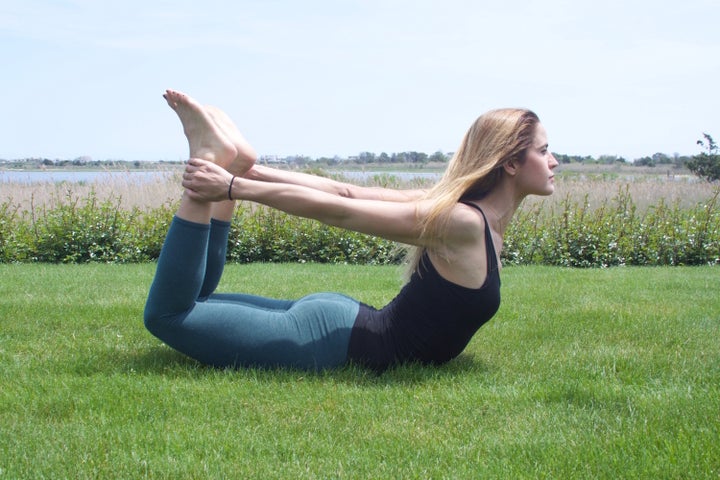
Whether we are on our mats, walking down the street or sitting in our chairs at work, we can all benefit from taking a moment to practice the yogic art of grounding. We will feel more at home in our bodies and induce a calming parasympathetic nervous system response by taking a deep breath and bringing our awareness to the body part that is physically connecting us to our mat, our chair or the concrete.
Grounding is one of the fundamental principles of the yoga practice. The part of our body that is touching the ground is what we build upon in each pose. What presses into the earth affects everything above it due to the earth’s gravitational pull. When one part of the body roots down, the earth pushes back and the body part directly above it automatically lifts. It is this lifting through grounding that helps us elongate to create lightness and ease in ourselves both physically and mentally. Spiritually, the root chakra is the foundation of the energetic body and if it’s at all off balance, chances are everything else above it will be too.
Working on postures from the ground up is a skill that will continue to improve our practices and our lives dramatically. It is most easily accomplished while standing or sitting still. The root of each pose will directly determine the outcome of the rest of the posture. When we stand on our feet we are setting a foundation of alignment for all the joints above – our ankles, knees, hips, pelvis and lower back. Distributing the weight evenly throughout both feet with half the weight in the heels, the other half in the metatarsals (or balls of the foot) will create the solid foundation that each joint needs.
As we turn our focus towards what is connected to the earth we can determine whether our bones are in proper alignment or if anything needs to be repositioned to create more space. Grounding firmly into the hands in a downward facing dog will actually help us rebound up and out of our wrists, protecting that delicate joint. We can then stabilize our alignment by engaging the muscles that support our bones.
It is only as we ground that we can implement certain corrections to our posture to prevent injury. By pressing down through the feet we can then lift up through our inner arches if we have a tendency towards pronation or collapsing inner feet. And it is through grounding that we can hug the outer ankles in if we have a tendency towards supination where the weight falls excessively towards the outer edges of the feet. Mindfulness of these concepts in all postures, even while walking, will allow for greater comfort and wellbeing, enabling us to move through life with grace and ease.
Emotionally, if we take several deep breaths and focus our energy on what is connecting us to the ground, then for that moment we are no longer in our heads. Procrastination, forgetfulness and spinning out are all symptoms of not being grounded. Many of us tend to be a little too in our heads with the onslaught of advertising, media and technology and find ourselves overthinking. When we feel banded together with the earth we are part of something that is much greater than ourselves. It is a reminder that we are not isolated in our own egos, that what exists beyond the realm of our own consciousness is infinitely expansive. Shifting our focus downwards makes us feel more centered. Our problems seem smaller, we feel supported, and capable of almost anything.
